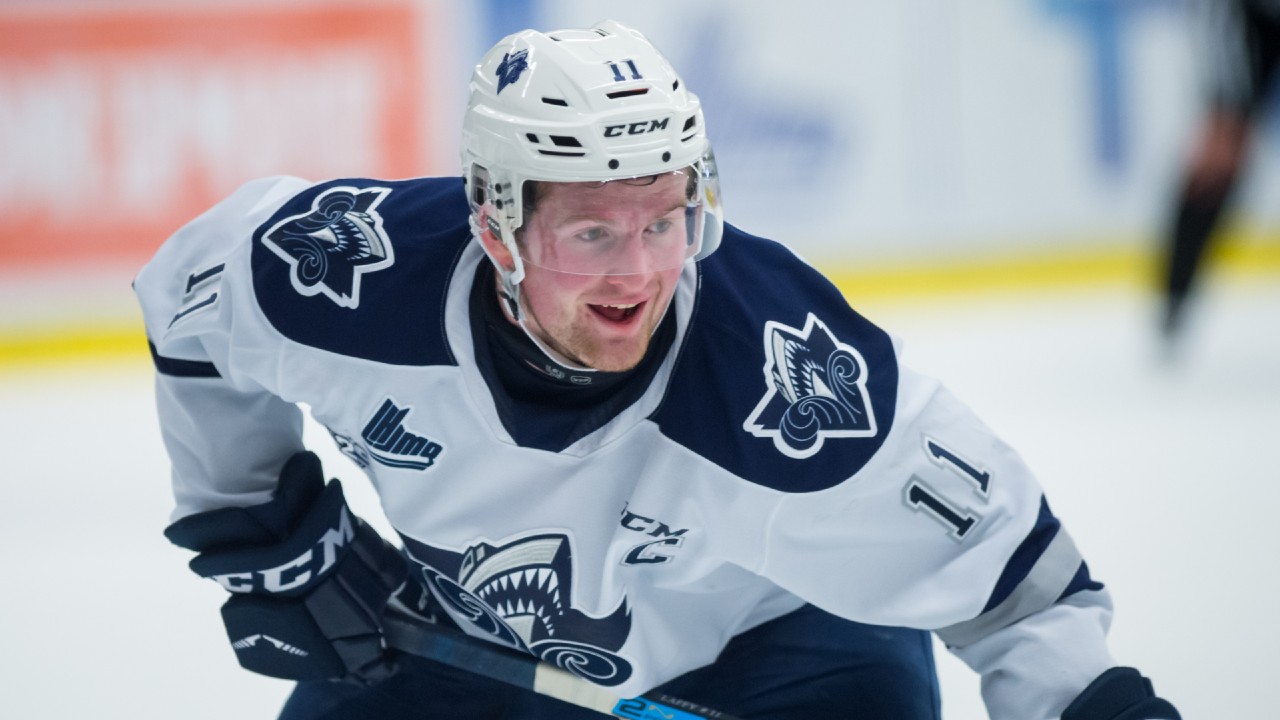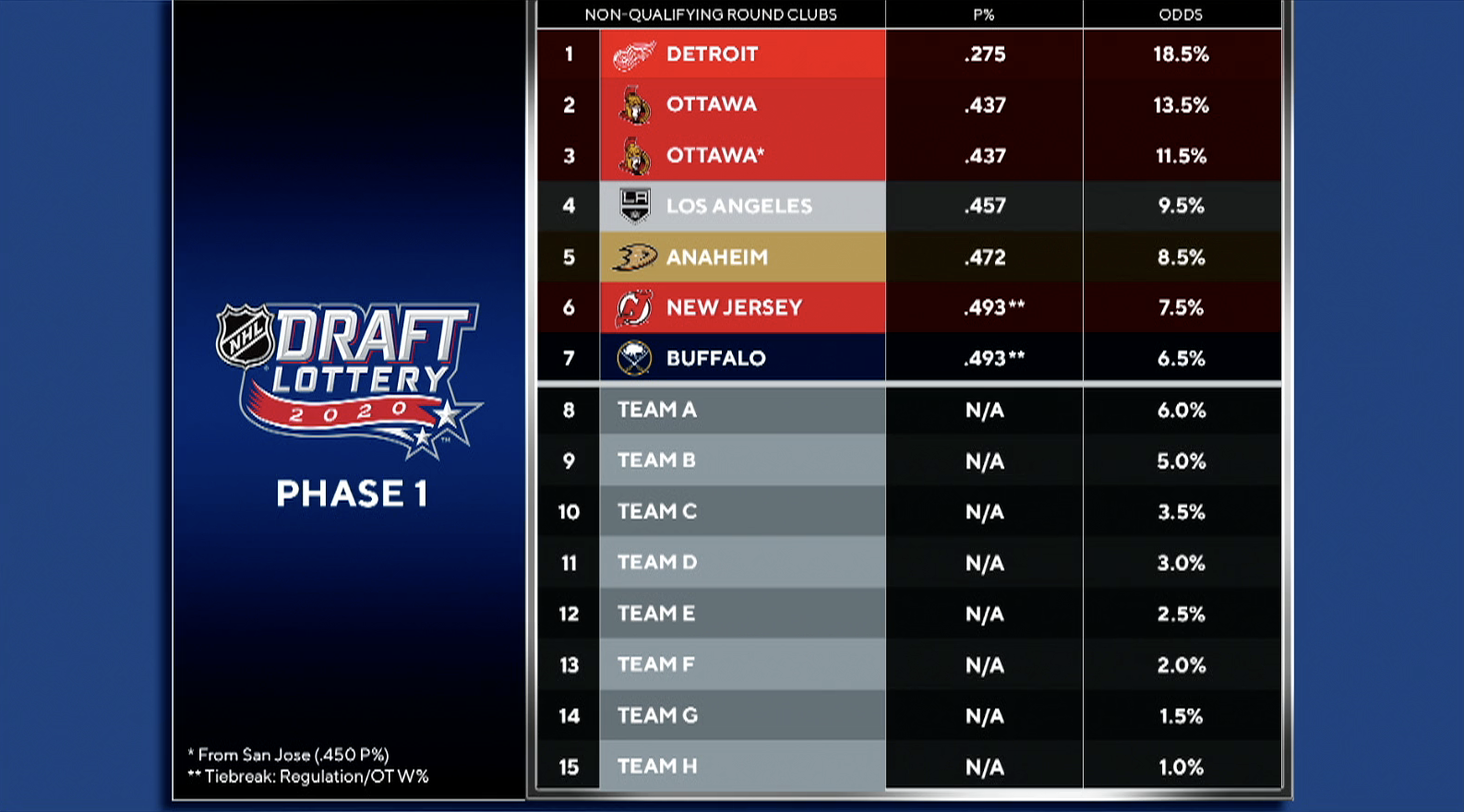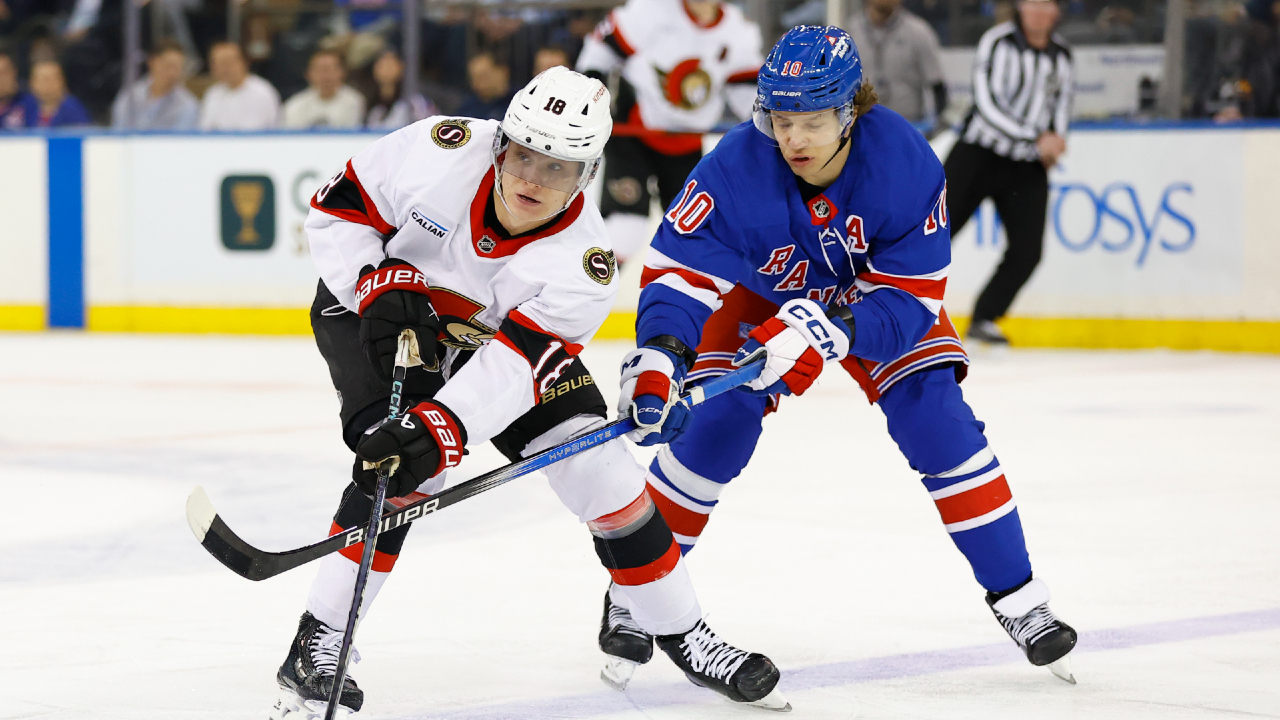
On Friday night, the hockey world will be one step closer to learning which team will win the right to draft first overall later this year.
June 26 was, back in pre-COVID days, supposed to be the date of Round 1 of the 2020 NHL Draft – the night we’d welcome Rimouski Oceanic star Alexis Lafreniere into the pros and watch him and the rest of this year’s class of hockey hopefuls hit the draft stage in Montreal upon hearing their names called.
Instead, Friday will see Phase 1 of the 2020 NHL Draft Lottery take place, a special production typically held annually in April, which will determine the draft order of the first three picks of the 2020 NHL Draft.
As the pandemic continues to drastically alter the world (and the world of sports), it also brings a lottery unlike any we’ve seen before.
Here’s what you need to know ahead of the event:
The NHL has mapped out a two-phased approach to this year’s draft lottery. Why?
At the time of the season hiatus on March 12, we had a tight playoff race on our hands with several teams still owning a mathematical shot (albeit a long one) at jumping into the playoff picture. By bringing back 24 teams in the NHL’s return-to-play format and implementing a qualifying round that will determine the playoff fate of 16 of them right off the bat, the league preserves some of its playoff parity without completely eliminating those teams’ lottery odds.
Having two phases, if deemed necessary (details on that later), puts some fate back into the hands of teams in the play-in round as the loser in each of those series could still have a shot at a lottery pick.
Phase 1 will include 15 teams, but we only know seven right now.
When the NHL resumes playing, seven teams won’t be in the mix: The Detroit Red Wings, Ottawa Senators, San Jose Sharks*, Los Angeles Kings, Anaheim Ducks, New Jersey Devils, and Buffalo Sabres all found themselves at the bottom of the standings in March, thus making them lottery-bound.
(*The Sharks’ first-round pick belongs to the Senators, which means the Senators could very likely have two picks in the top three.)
The seven teams highlighted above will be joined by eight “placeholder” teams. We won’t know who those eight teams are until the NHL resumes playing. While the winner from each of the following best-of-five qualifying series will move on in the hunt for the Stanley Cup, the losing side will wind up with a top-15 pick:
Pittsburgh vs. Montreal
Carolina vs. NY Rangers
NY Islanders vs. Florida
Toronto vs. Columbus
Edmonton vs. Chicago
Nashville vs. Arizona
Vancouver vs. Minnesota
Calgary vs. Winnipeg.
What are the odds?
By still including 15 teams in the draft lottery, the NHL is able to assign its same lottery odds system it has used since 2016:

The Senators look poised to be Friday’s biggest winners.
The Detroit Red Wings, based on their last-place position in the standings and their .275 points percentage, have the best odds of winning based on any one single entry (18.5 per cent), but this really is the Ottawa Senators’ draft lottery to lose. The Senators are in prime position to claim the No. 1 spot as they have two horses in this race. They own both the second-best (13.5 per cent) and third-best (11.5 per cent) odds, giving them a combined 25 per cent chance at the top spot. (Senators fans will note that Ottawa also owns the Islanders’ first-rounder… but it’s lottery-protected.)
Like the odds, the lottery draws will use the same method established in 2016.
Amid so much change, this part stays the same. Just like in the past few years since it was implemented in 2016, three separate draws will be conducted to determine pick Nos. 1, 2, and 3 (in that order).
Each lottery team is assigned a sequence of numbers – the higher your odds of winning, the more sequences you’re assigned. As numbered lottery balls are drawn at random, the sequence for each of the top three picks is matched to a master list of numbers assigned to teams.
If all three top picks are awarded to a bottom-seven team this Friday, we won’t need a Phase 2.
If all three picks land with the Red Wings, Senators, Kings, Ducks, Devils, and/or Sabres, then there won’t be a need for a Phase 2. Picks four to seven will fall into place based on the standings among those bottom seven teams. Based on this, the Red Wings will pick fourth at worst, while the Senators are guaranteed two picks in the top six.
In this scenario, picks eight to 15 would then be assigned to the losing teams from the qualifying round, also based on points percentage as of March 12. (For example, should the Canadiens lose their play-in series, they would pick at spot No. 8, but if the Penguins lost they’d have pick No. 15.)
If a placeholder team wins one or more top-three pick, prepare for Phase 2 (and plenty of intrigue).
Though not very likely, we’ve seen teams jump in the lottery before – look at the Chicago Blackhawks, just last year. After finishing the 2018-19 season in 20th place, six points out of a wild card spot, they entered the lottery with a 2.5 per cent chance at landing the top pick – that’s the same percentage as placeholder “Team E” this year. They emerged with the No. 3 overall pick in last year’s draft, jumping nine spots from 12 to three.
Phase 2, if necessary, will feature eight teams — each with the same odds of winning.
Phase 2 of the lottery, which will be conducted after the play-in round, would see all eight placeholder teams entered into one lottery draw per pick (if placeholder teams win two of the top three picks this Friday, two separate draws will be required). The bottom seven teams that were part of Phase 1 will not be included in this stage — their fates will have already been determined on Friday.
Upping the intrigue is the fact that qualifying-round teams will know well before play resumes whether a placeholder team is in the running for a top-3 pick. Cue the tank talks?
And here’s the really intriguing part: All eight teams in Phase 2 will have the exact same odds of being picked: 12.5 per cent.
So you’re saying there’s a chance…
Before the NHL lottery guidelines were released, there was some concern that an expanded playoff bracket and a rejigged lottery could perhaps add up to the possibility of a team winning both the Stanley Cup and the draft lottery. This will not be the case.
It is still entirely possible, though, that a really good team could win the rights to the top prospect. Let’s use the Pittsburgh Penguins, the winningest team not awarded an automatic berth in Round 1, as an example:
At the time of the season stoppage, the Penguins were third in the Metropolitan Division, fifth in the Eastern Conference, and seventh in the entire league with a post-season berth all but guaranteed back in March. Yet, based on this year’s format, they still have to earn their way into Round 1 via a best-of-five qualifying series against the Montreal Canadiens.
Should the Penguins lose to the Habs (hockey is parity on ice, after all) and a placeholder team is awarded the No. 1 overall pick, suddenly there’s a 12.5 per cent shot we could see Lafreniere suit up alongside Crosby next season.
You can map out a similar route for the other top-ranked teams that just barely missed out on a return-to-play bye – the Edmonton Oilers could very well find the ultimate winger to skate alongside Connor McDavid, or the Toronto Maple Leafs might just turn disappointment into another entry-level jackpot (their traded first-round pick, property of Carolina, is top-10 protected).
The draft date is still up in the air.
The date of the draft will depend on when the league is able to play out the remainder of the 2019-20 campaign.
Who are this year’s top prospects?
From pre-season to now, the No. 1 prospect has been winger Alexis Lafreniere. Known for his smarts and his complete skillset, he’ll be a game-changer for any team lucky enough to draft him.
Fellow forwards Quinton Byfield and Tim Stutzle also have franchise-player potential themselves, while this class’s strongest skater, Jamie Drysdale, looks likely to be the first defender off the board.




